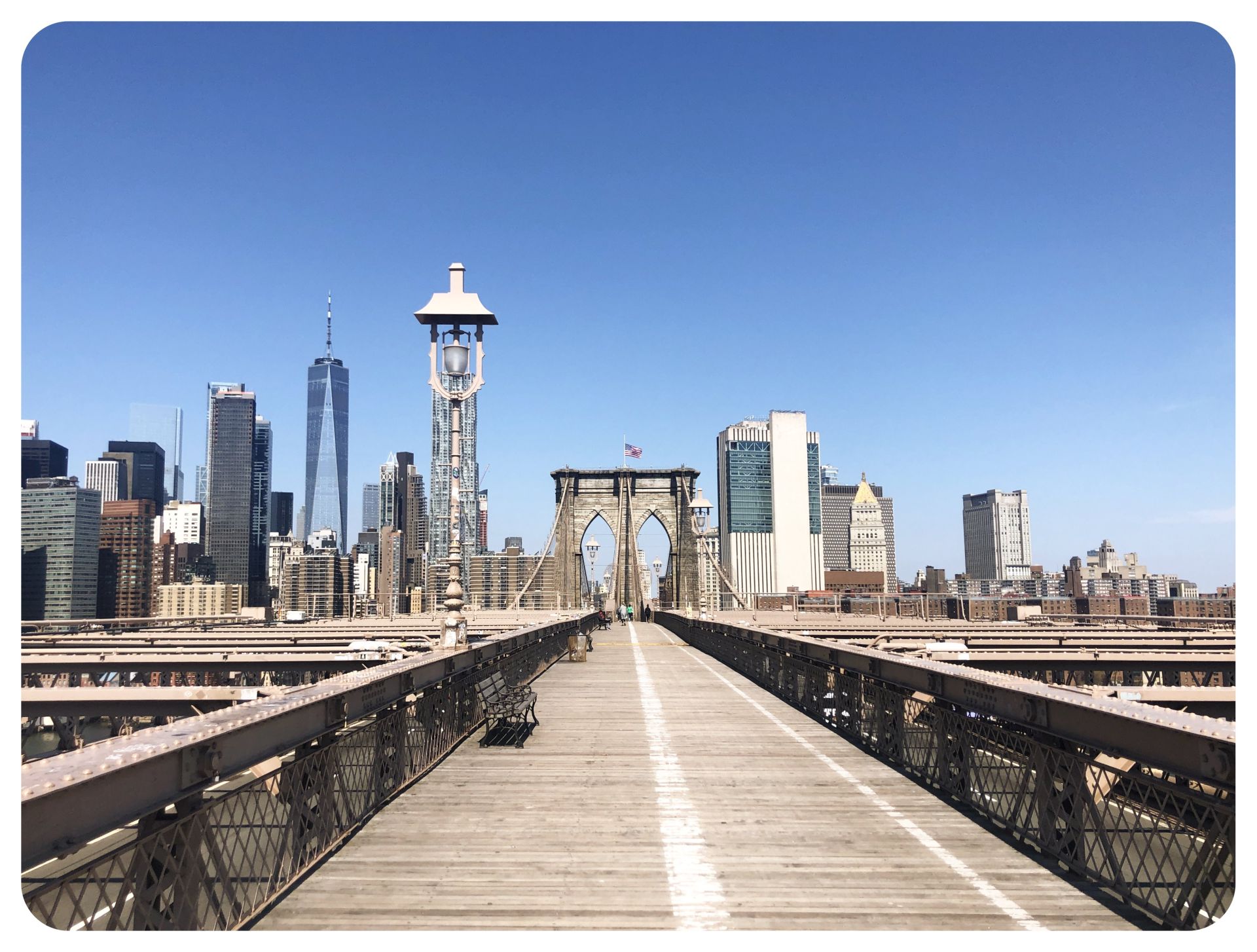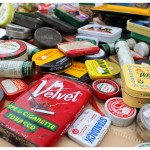Last Updated on March 7, 2021
I live under the flight path of JFK Airport, and I am used to hearing the roaring noise of planes descending over Brooklyn as they are making their way to New York’s largest airport – usually every few minutes. Right now, however, I hear barely any planes, and what used to be a familiar sound now startles me every time it occurs. The sound of airplanes over New York City has become rare – which is something that I didn’t think was even possible.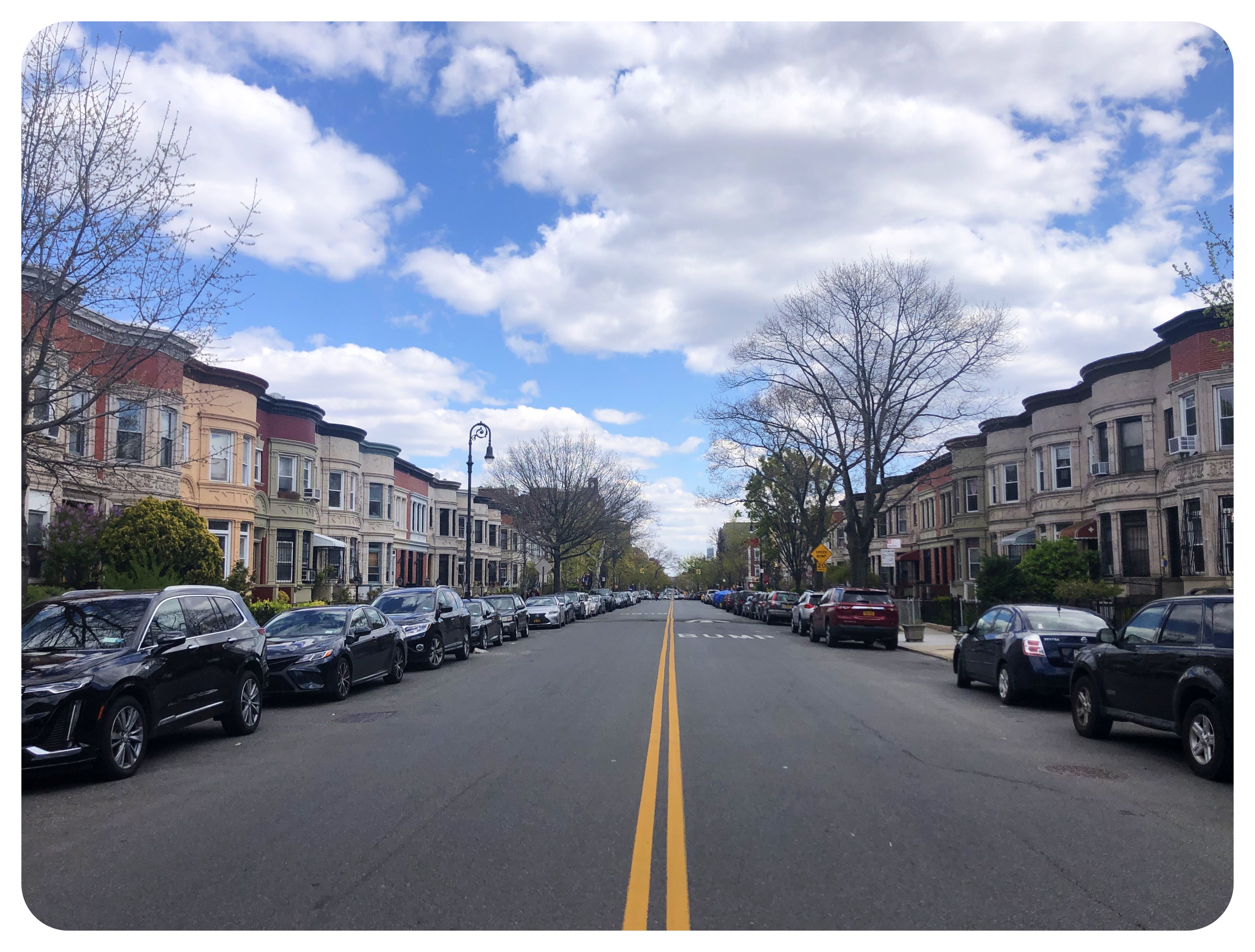 Empty street in Brooklyn
Empty street in Brooklyn
But that’s only one of the many changes that I’m experiencing in New York City right now, one of the many things I am getting used to as I am adjusting to what’s referred to as “the new normal” by the media. When I leave my apartment to go grocery shopping, I don’t double check anymore if I have my wallet and my lip balm – instead, I am checking if I have my face mask and my hand sanitizer. I didn’t even carry hand sanitizer on me on a daily basis until only a month ago. And the only reason I even own a small bottle of hand sanitizer is because a friend of mine happened to find a few bottles in her parents’ pantry (finally, their hoarding of pretty much everything for an “emergency” was paying off.). Because a month ago, it was absolutely impossible to find hand sanitizer anywhere in New York City. On 10 March, a friend of mine arrived in New York; she was visiting from Europe. When she boarded her flight in Spain, she didn’t expect to be scrambling to get on a flight back to Europe just ten days later – cutting her 3-week U.S. trip considerably short. But when she arrived, New York City was still “open”. We were able to do some sightseeing, we had dinner at TimeOut Market, we climbed the Vessel, we walked the High Line. On 12 March, I took the subway after work to meet my friend to see a Broadway show when I got a text message that all Broadway theaters were closing until further notice – effective immediately. I was in disbelief. All Broadway theaters closed.. had that ever happened before? I knew what this meant: the city would shut down completely, it wouldn’t stop at the theaters.
On 10 March, a friend of mine arrived in New York; she was visiting from Europe. When she boarded her flight in Spain, she didn’t expect to be scrambling to get on a flight back to Europe just ten days later – cutting her 3-week U.S. trip considerably short. But when she arrived, New York City was still “open”. We were able to do some sightseeing, we had dinner at TimeOut Market, we climbed the Vessel, we walked the High Line. On 12 March, I took the subway after work to meet my friend to see a Broadway show when I got a text message that all Broadway theaters were closing until further notice – effective immediately. I was in disbelief. All Broadway theaters closed.. had that ever happened before? I knew what this meant: the city would shut down completely, it wouldn’t stop at the theaters. And within days, everything in New York City changed. In less than a week, the entire city had transformed: TimeOut Market closed two days after we ate there, the High Line closed, all the museums closed. Schools and universities closed. On 15 March it was announced that all restaurants would be closing on 17 March (with the option to stay open for take-out and delivery).
And within days, everything in New York City changed. In less than a week, the entire city had transformed: TimeOut Market closed two days after we ate there, the High Line closed, all the museums closed. Schools and universities closed. On 15 March it was announced that all restaurants would be closing on 17 March (with the option to stay open for take-out and delivery). When I walked through my neighborhood the day after restaurants and bars closed, it already felt considerably emptier. New Yorkers were bracing themselves for a “shelter in place” order, which basically meant a complete lockdown of NYC. Most of the shops were already closed. Back then, New York City had “only” around 800 Coronavirus cases, and a handful deaths. A week later, New York City had 15,000 Coronavirus cases.
When I walked through my neighborhood the day after restaurants and bars closed, it already felt considerably emptier. New Yorkers were bracing themselves for a “shelter in place” order, which basically meant a complete lockdown of NYC. Most of the shops were already closed. Back then, New York City had “only” around 800 Coronavirus cases, and a handful deaths. A week later, New York City had 15,000 Coronavirus cases.
Now, four weeks later, walking through my neighborhood feels strange. New York has been on lockdown since 20 March. All the shops have their roll-down gates down, barely any people are outside. It is eerily quiet. I take a stroll around the neighborhood and see some people outside the few shops that are still open. They all have hand-drawn signs on their doors, stating how many people are allowed inside at a time. Some stores allow four people, others only two. Most people cover their mouths with face masks, while others use bandanas or scarves to cover their mouths and noses. Every once in a while, I see someone without a face mask.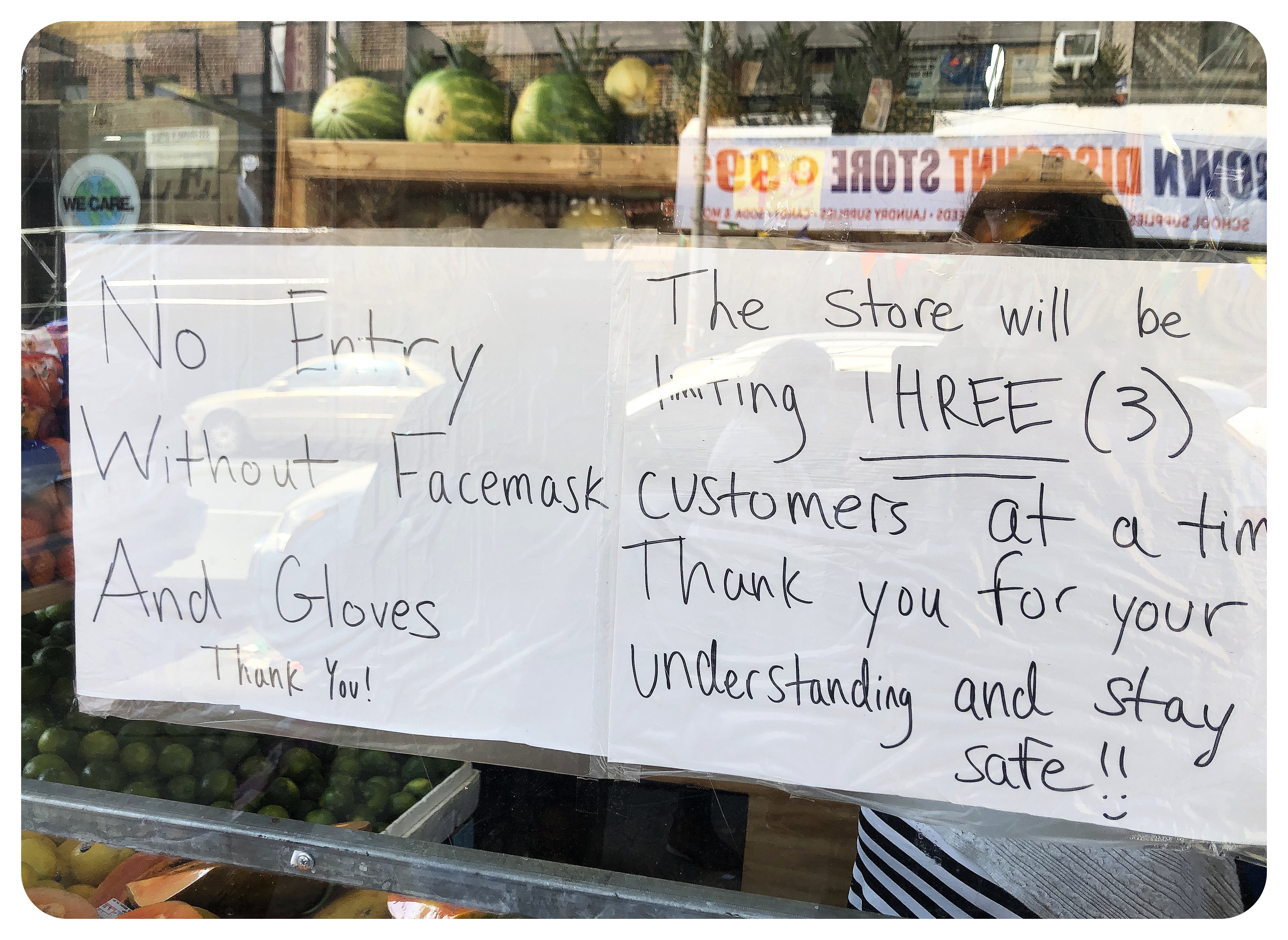 While walking through this strange new world, I keep hearing sirens. They come and go, but they are recurring. A constant reminder of the fact that I am not walking through the movie set of a post-apocalyptic thriller, but that this is still very much New York City. A city that, sadly, has been hit harder than any other city in the world by COVID-19. Every time an ambulance passes me, I can’t help but think of the person inside the ambulance. A month after the “Shelter in place” order went into effect, New York City has just under 139,000 confirmed Coronavirus cases, and over 10,000 people have died. Over 10,000 people in my city have died from COVID-19 in less than a month – let that sink in for a moment.
While walking through this strange new world, I keep hearing sirens. They come and go, but they are recurring. A constant reminder of the fact that I am not walking through the movie set of a post-apocalyptic thriller, but that this is still very much New York City. A city that, sadly, has been hit harder than any other city in the world by COVID-19. Every time an ambulance passes me, I can’t help but think of the person inside the ambulance. A month after the “Shelter in place” order went into effect, New York City has just under 139,000 confirmed Coronavirus cases, and over 10,000 people have died. Over 10,000 people in my city have died from COVID-19 in less than a month – let that sink in for a moment. It didn’t take very long for me to be personally affected by this virus: while my friend from Europe was still in town mid-March, someone close to me started feeling very ill. All the symptoms sounded like COVID-19, and she went straight to the doctor. There, they ruled out a number of flu strains, and told her that she probably has Coronavirus, but at the time, they didn’t have any tests to verify their suspicion. They told her to go home to self-quarantine for 14 days, since her symptoms weren’t severe enough for hospitalization.
It didn’t take very long for me to be personally affected by this virus: while my friend from Europe was still in town mid-March, someone close to me started feeling very ill. All the symptoms sounded like COVID-19, and she went straight to the doctor. There, they ruled out a number of flu strains, and told her that she probably has Coronavirus, but at the time, they didn’t have any tests to verify their suspicion. They told her to go home to self-quarantine for 14 days, since her symptoms weren’t severe enough for hospitalization.
Since I was still feeling well and was able to leave the house to pick up groceries, I became her personal delivery person, supplying her regularly with fresh produce and the occasional treat, to lift her spirits. Seeing her struggle through this disease, which took the typical course of first improving before symptoms worsening a week later, made me even more scared of the virus than I already was. A field hospital had been erected in Central Park to treat overflow Coronavirus patients that hospitals had run out of room for, and a similar makeshift hospital had been set up inside the Javits Convention Center in Manhattan. My biggest fear was ending up in one of these field hospitals, so other than the occasional grocery haul I stayed away from people as much as possible, and I became so obsessed with washing my hands that my skin started to suffer. I thought I had seen the worst when I witnessed a person being taken out of an ambulance outside the local hospital one day, a person that looked to be in such a bad state that at first, I didn’t even know if they were alive. But then I saw the morgue trucks. What I saw first was a flower bouquet on the ground, and a big poster thanking the healthcare workers. I wondered why they’d left the flowers there, on the side of the road, when I noticed the humming coming from a truck right behind the sign. And that’s when it hit me. This was one of these morgue trucks in which they stored the bodies that they didn’t have room for inside the hospital’s morgue. I had a hard time breathing when I realized I was standing in front of a truck filled with corpses.
I thought I had seen the worst when I witnessed a person being taken out of an ambulance outside the local hospital one day, a person that looked to be in such a bad state that at first, I didn’t even know if they were alive. But then I saw the morgue trucks. What I saw first was a flower bouquet on the ground, and a big poster thanking the healthcare workers. I wondered why they’d left the flowers there, on the side of the road, when I noticed the humming coming from a truck right behind the sign. And that’s when it hit me. This was one of these morgue trucks in which they stored the bodies that they didn’t have room for inside the hospital’s morgue. I had a hard time breathing when I realized I was standing in front of a truck filled with corpses. These images – the morgue trucks, the sick person on the stretcher, but also my sick friend who I’d see every week through the entrance glass door of her building, and whose face looked ashen, with hollow eyes – are images I cannot erase from my brain, and probably will never forget. The sound of sirens will always remind me of these dark times, and I am not the only one. “I feel their presence in my body as an ever-increasing tightness in my shoulders and neck. It is as though, around the clock, the city itself were wailing for its sick and dying.”, writes Lindsay Zoladz in her New York Times article about the ever-present sirens.
These images – the morgue trucks, the sick person on the stretcher, but also my sick friend who I’d see every week through the entrance glass door of her building, and whose face looked ashen, with hollow eyes – are images I cannot erase from my brain, and probably will never forget. The sound of sirens will always remind me of these dark times, and I am not the only one. “I feel their presence in my body as an ever-increasing tightness in my shoulders and neck. It is as though, around the clock, the city itself were wailing for its sick and dying.”, writes Lindsay Zoladz in her New York Times article about the ever-present sirens. Going grocery shopping has turned from a routinely task into a wearying and sometimes nerve-wrecking undertaking (depending on how many people decide to shop that day, i.e. how many people I come in contact with) that requires preparation and caution. Before I leave my house, I have to make sure that I have some wipes in my bag, my mask, hand sanitizer and gloves. Then I make my way to the grocery store on the bike, no matter if it is raining or hailing – I have only used the subway once since the “shelter at home” order went into effect, and that was when I did my first big quarantine grocery haul. I wasn’t even supposed to be here in New York when the city started shutting down, so my fridge and my pantry were as deserted as the shelves in the supermarkets.
Going grocery shopping has turned from a routinely task into a wearying and sometimes nerve-wrecking undertaking (depending on how many people decide to shop that day, i.e. how many people I come in contact with) that requires preparation and caution. Before I leave my house, I have to make sure that I have some wipes in my bag, my mask, hand sanitizer and gloves. Then I make my way to the grocery store on the bike, no matter if it is raining or hailing – I have only used the subway once since the “shelter at home” order went into effect, and that was when I did my first big quarantine grocery haul. I wasn’t even supposed to be here in New York when the city started shutting down, so my fridge and my pantry were as deserted as the shelves in the supermarkets.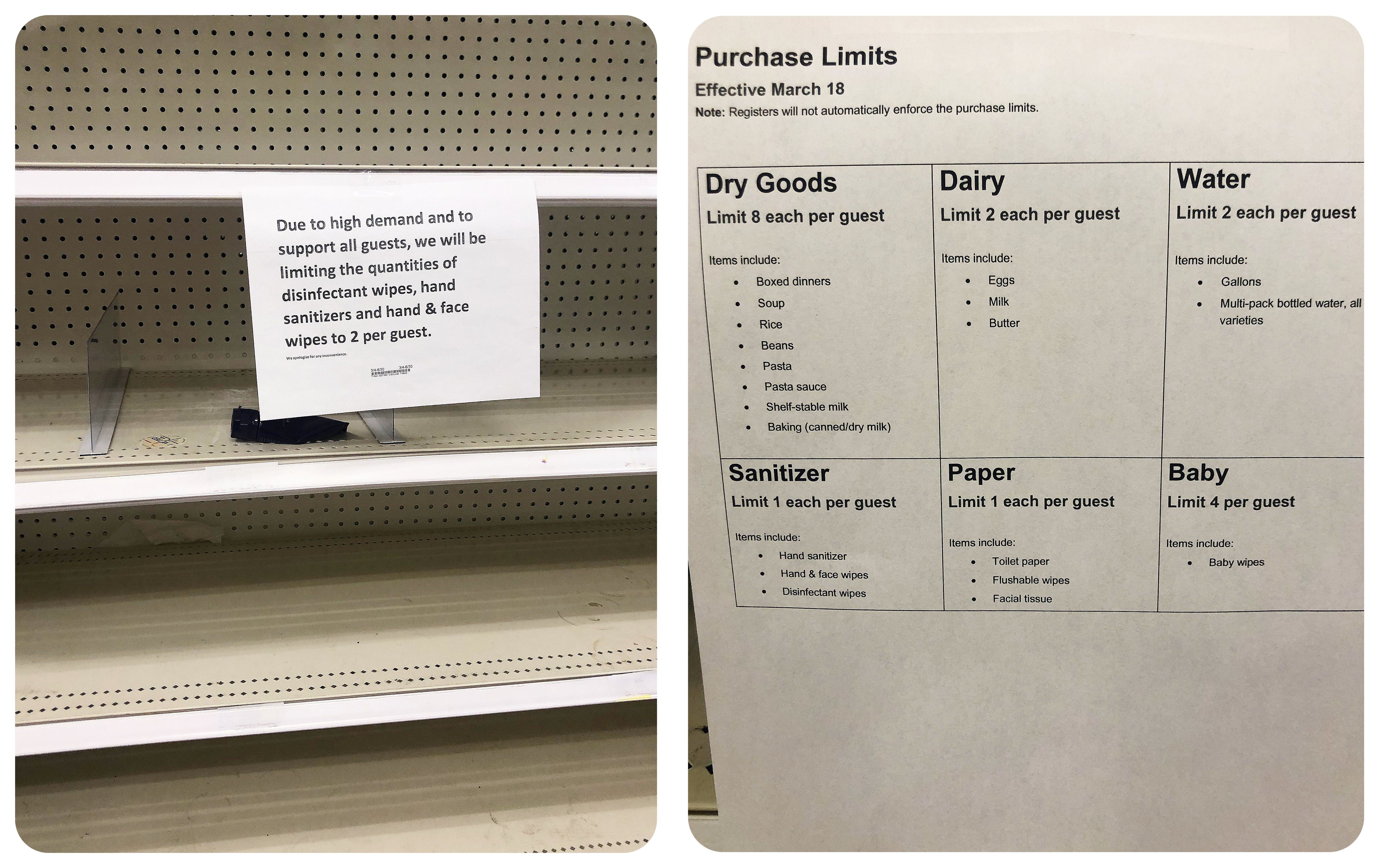 On that first grocery haul I ended up buying so many things that I wasn’t able to get them back home on a bike, which is why I took the subway for two stops. But I shouldn’t have been nervous about it: There were barely any people on the train. Every time I went out do my grocery shopping, the restrictions got tighter. First, they limited the amount of people inside the store, which is how I ended up in a line that went all the way down the block one time, thinking to myself in panic, “I am too close to too many people.” The next time I ventured outside for groceries, they had drawn lines on the sidewalk with chalk, marking the required six feet safety distance in between each person. These markers were also added inside the grocery store, so that when you get in line at the checkout, you keep your distance, as well.
On that first grocery haul I ended up buying so many things that I wasn’t able to get them back home on a bike, which is why I took the subway for two stops. But I shouldn’t have been nervous about it: There were barely any people on the train. Every time I went out do my grocery shopping, the restrictions got tighter. First, they limited the amount of people inside the store, which is how I ended up in a line that went all the way down the block one time, thinking to myself in panic, “I am too close to too many people.” The next time I ventured outside for groceries, they had drawn lines on the sidewalk with chalk, marking the required six feet safety distance in between each person. These markers were also added inside the grocery store, so that when you get in line at the checkout, you keep your distance, as well.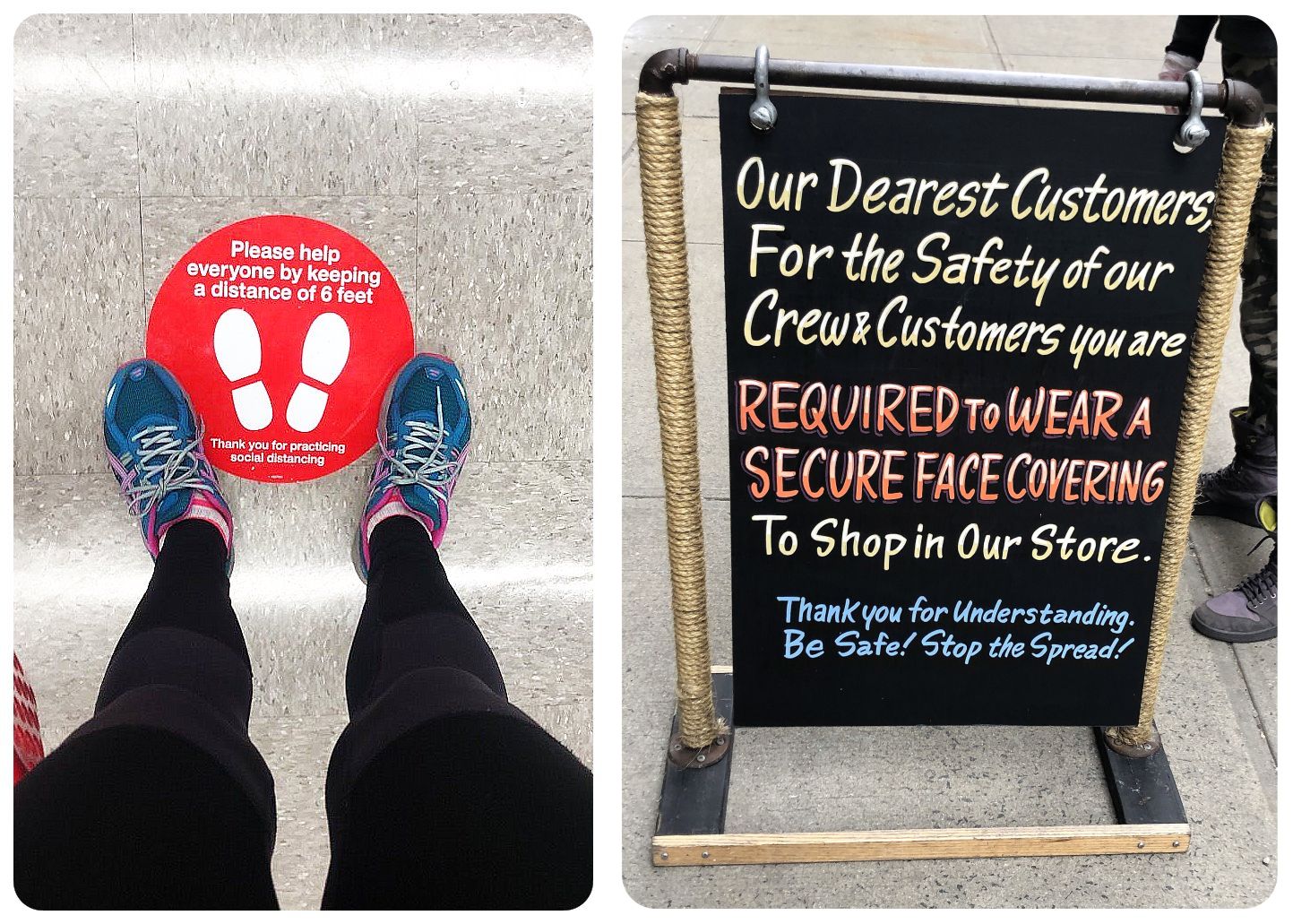 Since 16 April, masks have been mandatory when entering a grocery store. A day later, on 17 April, the governor announced that “New York on Pause”, which had initially been issued until 30 April, would be extended until 15 May – for now. That means a total of nearly nine weeks of New York City on pause. And to be honest, I don’t think that New York City will ease restrictions in mid-May – at least not to the extent that life in New York City as we know it will be possible.
Since 16 April, masks have been mandatory when entering a grocery store. A day later, on 17 April, the governor announced that “New York on Pause”, which had initially been issued until 30 April, would be extended until 15 May – for now. That means a total of nearly nine weeks of New York City on pause. And to be honest, I don’t think that New York City will ease restrictions in mid-May – at least not to the extent that life in New York City as we know it will be possible.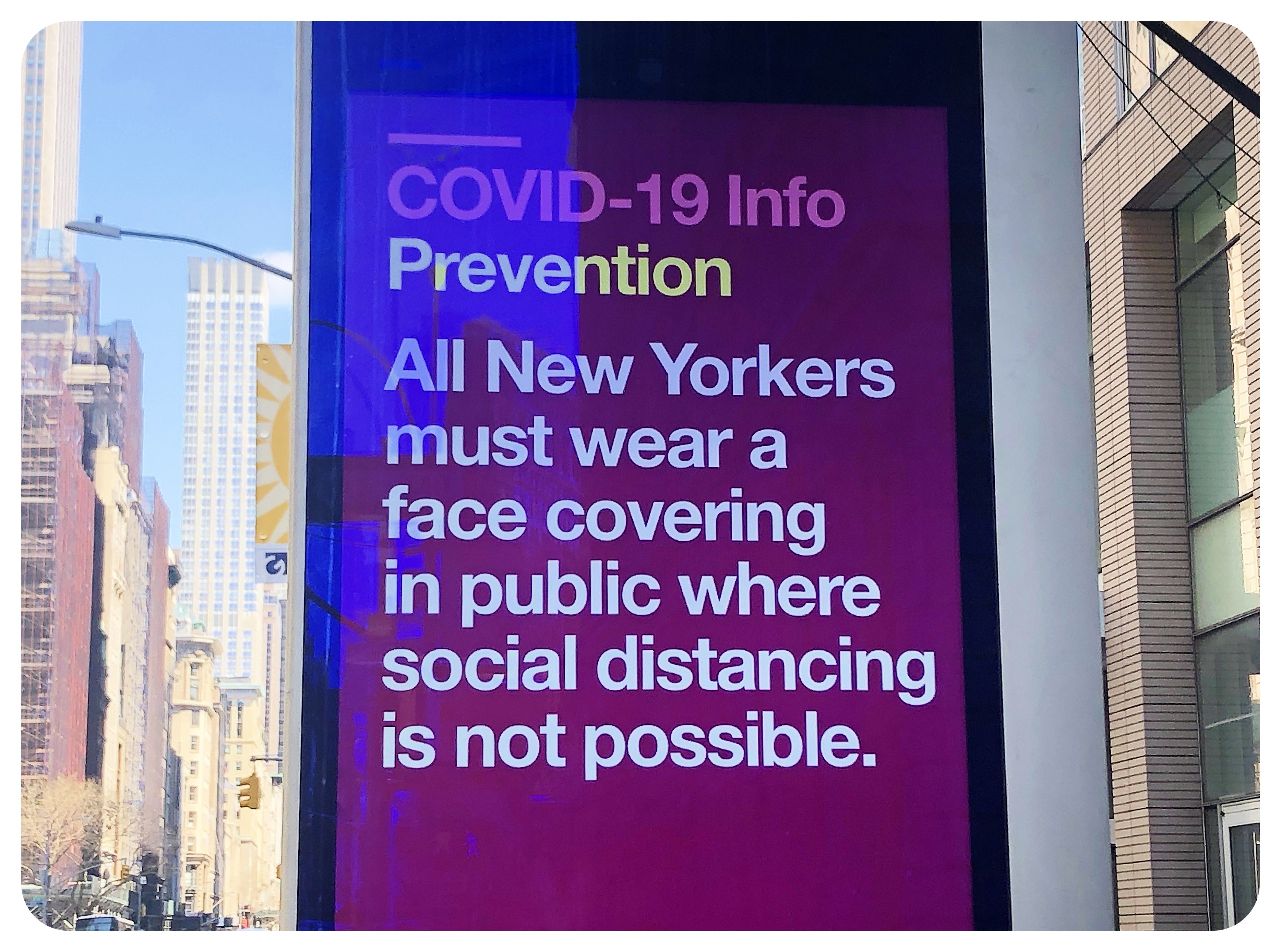 Last weekend I ventured into Manhattan for the first time since the lockdown started, and it was a bizarre experience. I crossed the Brooklyn Bridge, which was deserted. It was a beautiful spring day, and normally, the bridge would’ve been packed with tourists. Chinatown felt like a ghost town. I only saw two restaurants that were open there, and I saw almost no people out on the street. I cycled up Broadway in SoHo, where you usually find hundreds of shoppers on any given day, but Broadway was empty. I passed only a few people who were taking their dog out for a walk or to ran some errands. Some shops were boarded up completely, as if they were expecting looting and riots. This just added to the dystopian feel SoHo had.
Last weekend I ventured into Manhattan for the first time since the lockdown started, and it was a bizarre experience. I crossed the Brooklyn Bridge, which was deserted. It was a beautiful spring day, and normally, the bridge would’ve been packed with tourists. Chinatown felt like a ghost town. I only saw two restaurants that were open there, and I saw almost no people out on the street. I cycled up Broadway in SoHo, where you usually find hundreds of shoppers on any given day, but Broadway was empty. I passed only a few people who were taking their dog out for a walk or to ran some errands. Some shops were boarded up completely, as if they were expecting looting and riots. This just added to the dystopian feel SoHo had.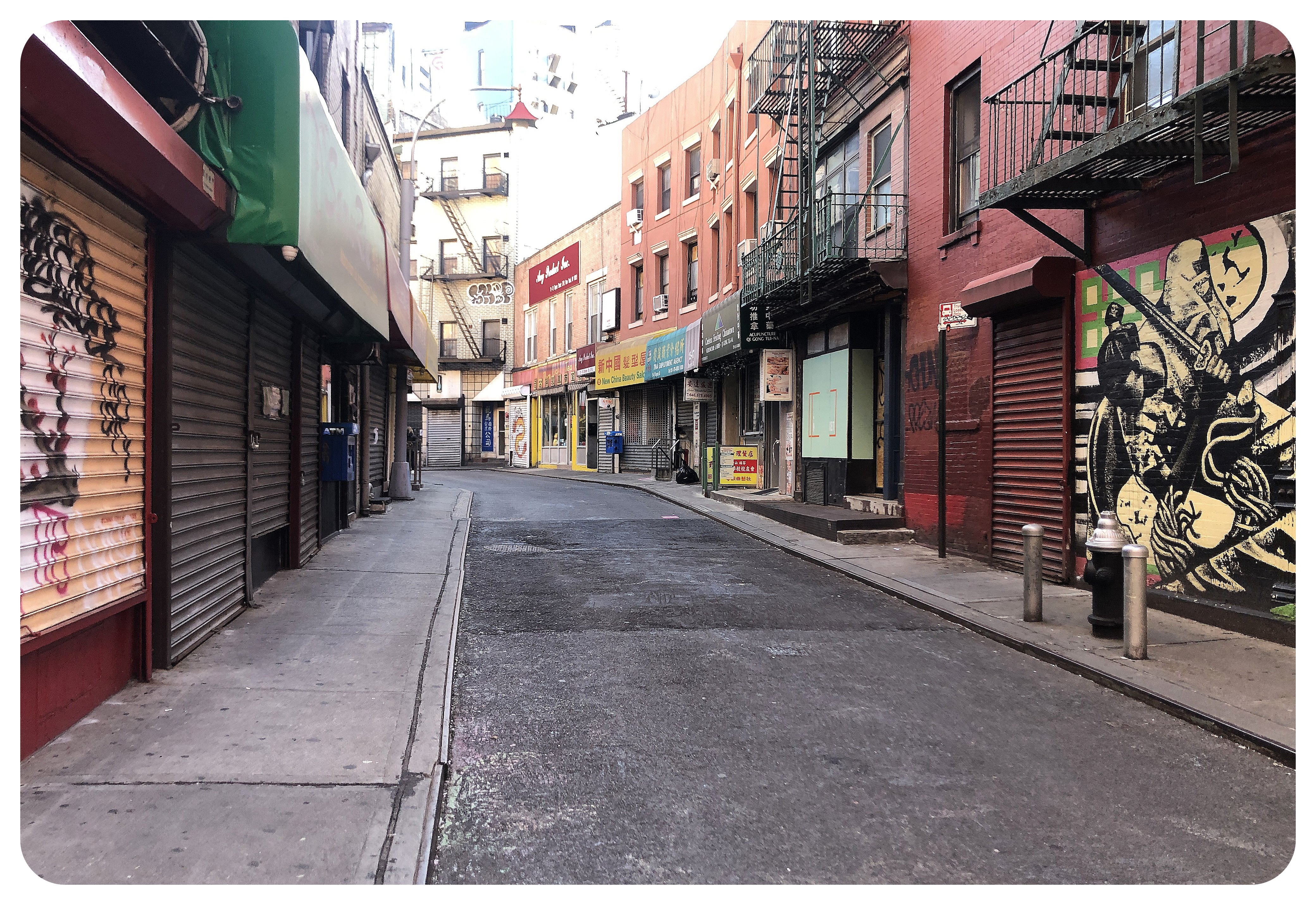 Chinatown feels like a ghost town
Chinatown feels like a ghost town
I rode my bike past Washington Square Park and Union Square, which, again, would’ve been busy on a sunny spring day. I missed the familiar sounds you usually hear in these places: singing buskers, chatter, laughter, the hip hop music young dancers usually blast from small portable speakers. The only places that were busy were the Whole Foods and Trader Joe’s supermarkets, where people lined up outside. A few blocks further north, in Madison Square Park, a few people were sitting in the park, and there was a line in front of Eataly, but the little square right across the Flatiron Building was deserted. The line outside a grocery store
The line outside a grocery store
Grand Central Terminal felt like a shadow of its former self. On a regular day, you’d see thousands of people rush through the Grand Concourse, on the way to or from their train. Now, all I could think was how strangely quiet it was. The only people in the station that day were people who wanted to take photos of the abandoned station. Instead of announcing train departures, the announcements that came through the speakers were all COVID-19 health and safety guidelines. Grand Central Terminal completely deserted
Grand Central Terminal completely deserted
I walked over to Times Square, and 42nd Street was so empty that I could’ve walked in the middle of the street. Normally, this is one of the most congested streets in Manhattan. Experiencing the city “on mute” was heartbreaking. Not only the hustle and bustle of the city had disappeared, but also that pulsating energy that makes New York feel so unique. There’s usually a vibrancy in the air that makes me walk with a spring in my step, and it made me realize how much of New York’s energy comes from its busy street life. The hot dog vendors, the yelling of people, the traffic noise, even the honking of the cars. Silent New York is not the same. You don’t realize how much things like cafes, street kiosks, restaurants, bodegas, and street vendors contribute to the overall atmosphere of a city until they’re gone. Seeing the Broadway theaters shuttered was depressing – theaters, comedy clubs and other performance venues are such a big part of the social life in New York. Times Square without any tourists was something I never thought I’d see. Even when I walked through Times Square at 5.30am in a snowstorm a few years ago, there were more people around than now. I also never thought I’d say this: Times Square without any tourists feels kind of dull.
Silent New York is not the same. You don’t realize how much things like cafes, street kiosks, restaurants, bodegas, and street vendors contribute to the overall atmosphere of a city until they’re gone. Seeing the Broadway theaters shuttered was depressing – theaters, comedy clubs and other performance venues are such a big part of the social life in New York. Times Square without any tourists was something I never thought I’d see. Even when I walked through Times Square at 5.30am in a snowstorm a few years ago, there were more people around than now. I also never thought I’d say this: Times Square without any tourists feels kind of dull. I’ll be the first one to admit that I curse at the crowds every time I have to pass through Times Square on the way to something, but seeing it so empty changed the entire atmosphere. The ever so bustling area felt like a sleepy square. The only two things that were the same: The glitzy billboards which were still advertising clothes companies and streaming services, and the Naked Cowboy, who was entertaining the few people that were lingering in Times Square.
I’ll be the first one to admit that I curse at the crowds every time I have to pass through Times Square on the way to something, but seeing it so empty changed the entire atmosphere. The ever so bustling area felt like a sleepy square. The only two things that were the same: The glitzy billboards which were still advertising clothes companies and streaming services, and the Naked Cowboy, who was entertaining the few people that were lingering in Times Square. Instead of souvenirs, the street vendors are now selling hand sanitizer and face masks
Instead of souvenirs, the street vendors are now selling hand sanitizer and face masks
What’s the most devastating about the city on lockdown is how many people’s livelihoods are affected or even destroyed by this pandemic. My heart breaks for all the owners of the small independent shops, the bodegas, the coffee shops and restaurants that contribute so much to the lively, social atmosphere of New York City. They are now struggling to pay the rent for their shops while they cannot use them, they had to lay off employees, and they may not even be able to reopen their businesses. Every week I read about restaurants that announce will not re-open, about people who were laid off and aren’t able to pay their rent and bills now. Over 40% of layoffs related to COVID-19 happened in the restaurant industry. In a city with a restaurant scene as thriving as New York City, the impact of the lockdown is absolutely devastating. Over half a million restaurant workers are out of work right now in New York State – and this number is still growing.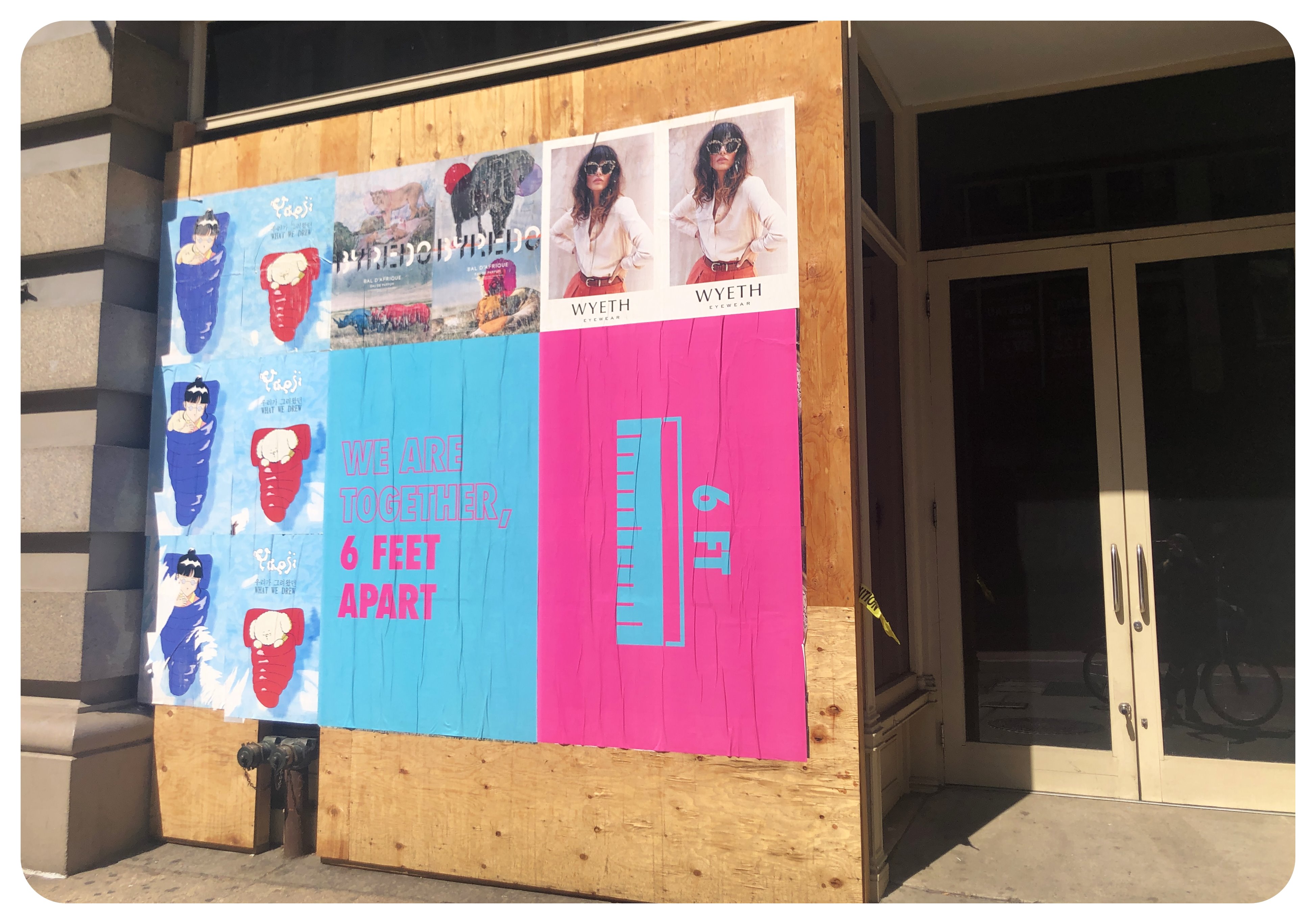 Life in New York is never easy, even when the economy is doing great, a lot of people work harder than elsewhere to make ends meet. But now, with the city heading into a recession, piling up debt, life in New York will be even challenging, and it’ll take a long time for things to go back to normal. And what does that even mean, normal? Nobody even knows what the “post-COVID-19 normal” will look like. When will the theaters be able to re-open? When can we go to bars and restaurants again and will it be possible the same way it was pre-COVID-19? Will sports bars be ever as packed again for major sports events as they were before this pandemic? When will we be able to enjoy concerts again and watch a baseball game in Yankees Stadium? When will tourists return to New York?
Life in New York is never easy, even when the economy is doing great, a lot of people work harder than elsewhere to make ends meet. But now, with the city heading into a recession, piling up debt, life in New York will be even challenging, and it’ll take a long time for things to go back to normal. And what does that even mean, normal? Nobody even knows what the “post-COVID-19 normal” will look like. When will the theaters be able to re-open? When can we go to bars and restaurants again and will it be possible the same way it was pre-COVID-19? Will sports bars be ever as packed again for major sports events as they were before this pandemic? When will we be able to enjoy concerts again and watch a baseball game in Yankees Stadium? When will tourists return to New York? All large parades scheduled for June, including New York Pride, have been canceled. It was announced that public pools wouldn’t open at all in 2020. Beaches may not open this summer either. This summer will not be like any other summer, because most of the things that make New York in the summer so great will not be possible: enjoying beaches, rooftop bars, outdoor concerts and movies, having drinks in a backyard patio of a bar, strolling around flea markets and street fairs.
All large parades scheduled for June, including New York Pride, have been canceled. It was announced that public pools wouldn’t open at all in 2020. Beaches may not open this summer either. This summer will not be like any other summer, because most of the things that make New York in the summer so great will not be possible: enjoying beaches, rooftop bars, outdoor concerts and movies, having drinks in a backyard patio of a bar, strolling around flea markets and street fairs. The unemployment rate in NYC was at around 4.3 per cent before COVID-19: in the entire month of February, 137,391 people filed for unemployment in New York City. In the first week of the lockdown, 521,112 claims were filed. That’s more than three times the amount of claims the city usually sees in a month. Unemployment claims have now increased by 2,637%. During the financial crisis in 2008, the entire state of New York lost around 300,000 jobs. New York City alone has already lost more jobs than that.
The unemployment rate in NYC was at around 4.3 per cent before COVID-19: in the entire month of February, 137,391 people filed for unemployment in New York City. In the first week of the lockdown, 521,112 claims were filed. That’s more than three times the amount of claims the city usually sees in a month. Unemployment claims have now increased by 2,637%. During the financial crisis in 2008, the entire state of New York lost around 300,000 jobs. New York City alone has already lost more jobs than that. 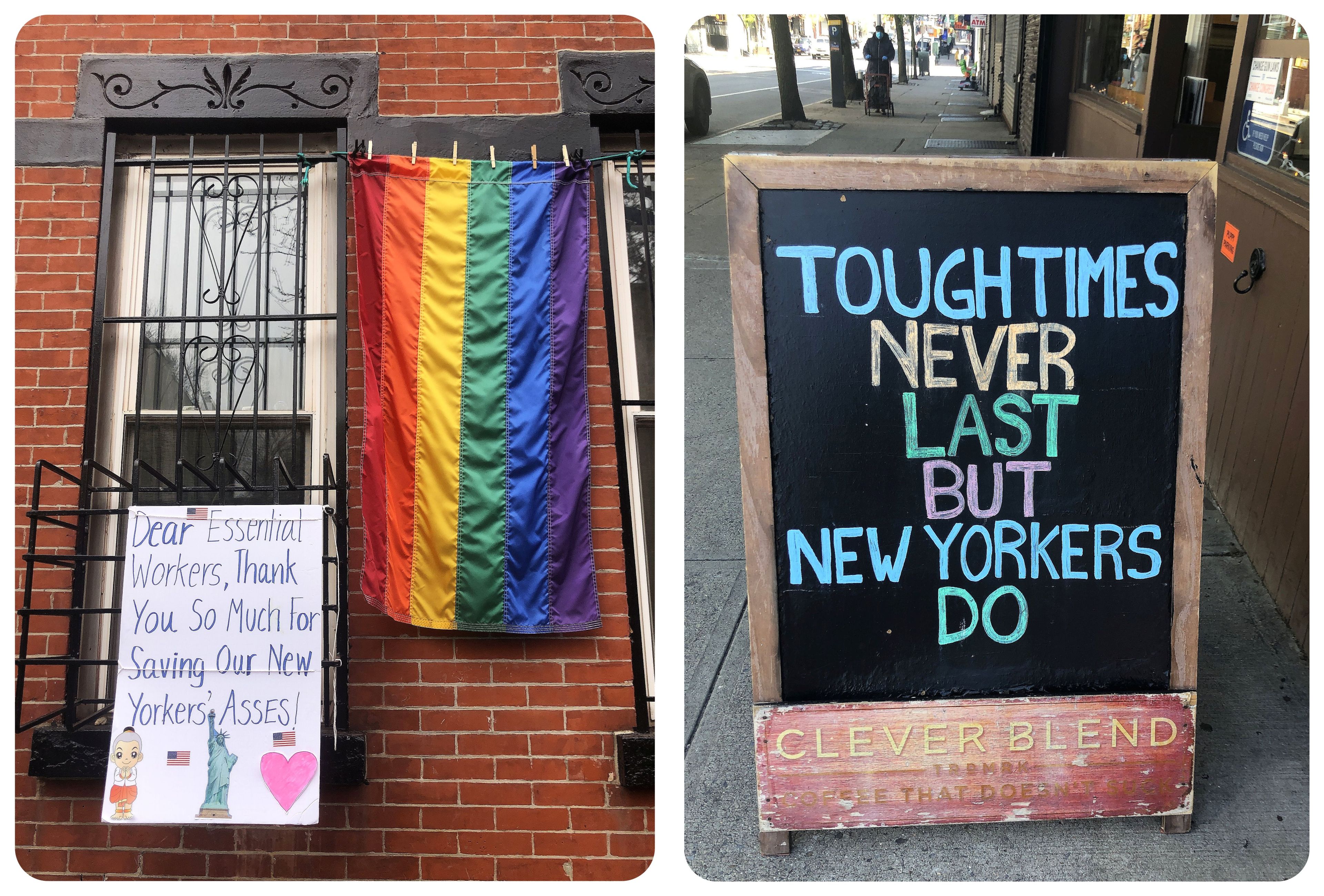 The Mayor of New York City is facing a projected $7.4 billion deficit in the city budget (mostly in lost tax revenue) and the economic impact of COVID-19 can be compared to the Great Depression. This deficit means that many city programs will be canceled, for example summer camp programs and the youth employment program which usually enrolls about 75,000 low-income students.
The Mayor of New York City is facing a projected $7.4 billion deficit in the city budget (mostly in lost tax revenue) and the economic impact of COVID-19 can be compared to the Great Depression. This deficit means that many city programs will be canceled, for example summer camp programs and the youth employment program which usually enrolls about 75,000 low-income students. 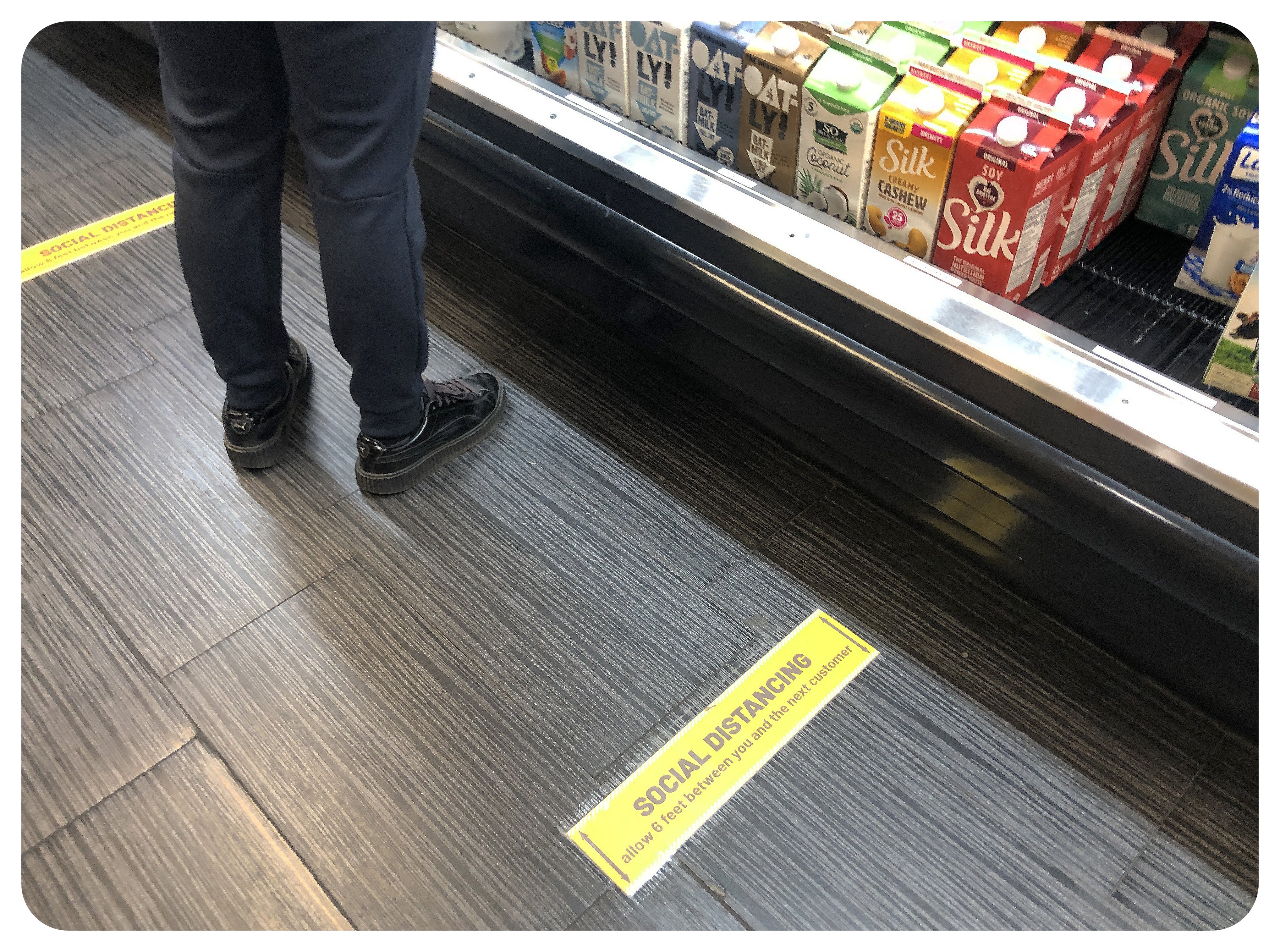 Even when this pandemic is over, New York City will struggle to get back to its former glorious self. But instead of ending with a depressing and gloomy outlook on post-COVID-19 New York City, I want to finish this article with this beautiful video and the optimistic words of New York’s governor Andrew Cuomo:
Even when this pandemic is over, New York City will struggle to get back to its former glorious self. But instead of ending with a depressing and gloomy outlook on post-COVID-19 New York City, I want to finish this article with this beautiful video and the optimistic words of New York’s governor Andrew Cuomo:
“And we’re going to get through it because we are New York, and because we’ve dealt with a lot of things, and because we are smart. You have to be smart to make it in New York. And we are resourceful, and we are showing how resourceful we are. And because we are united, and when you are united, there is nothing you can’t do. And because we are New York tough. We are tough. You have to be tough. This place makes you tough. But it makes you tough in a good way. We’re going to make it because I love New York, and I love New York because New York loves you.
New York loves all of you. Black and white and brown and Asian and short and tall and gay and straight. New York loves everyone. That’s why I love New York. It always has, it always will. And at the end of the day, my friends, even if it is a long day, and this is a long day, love wins. Always. And it will win again through this virus.”

